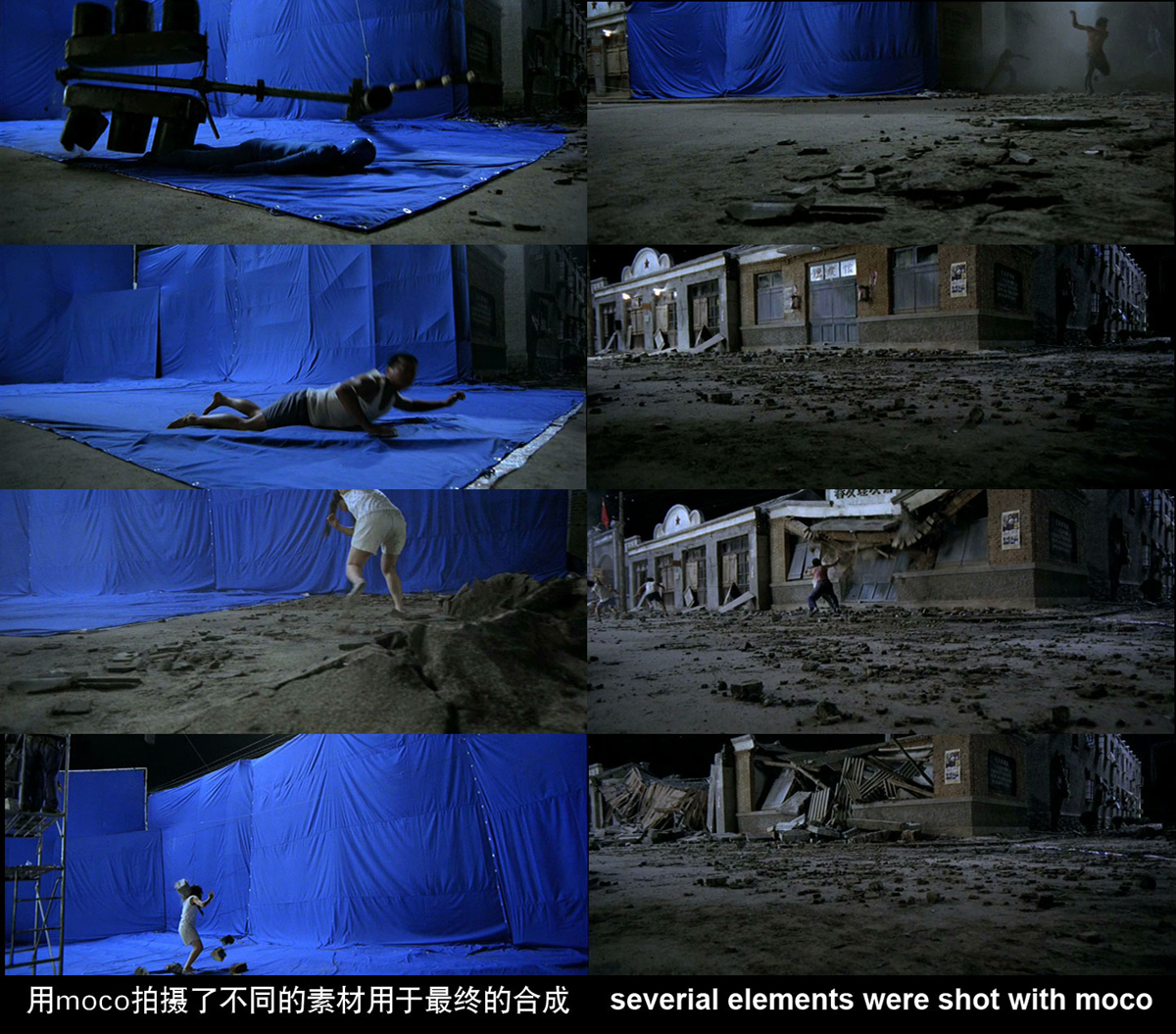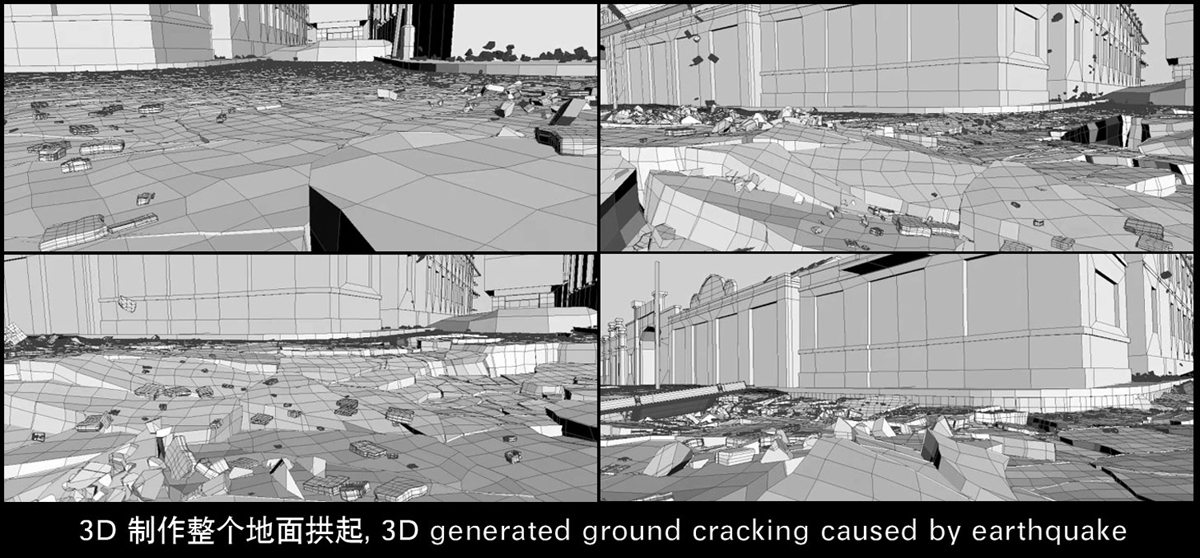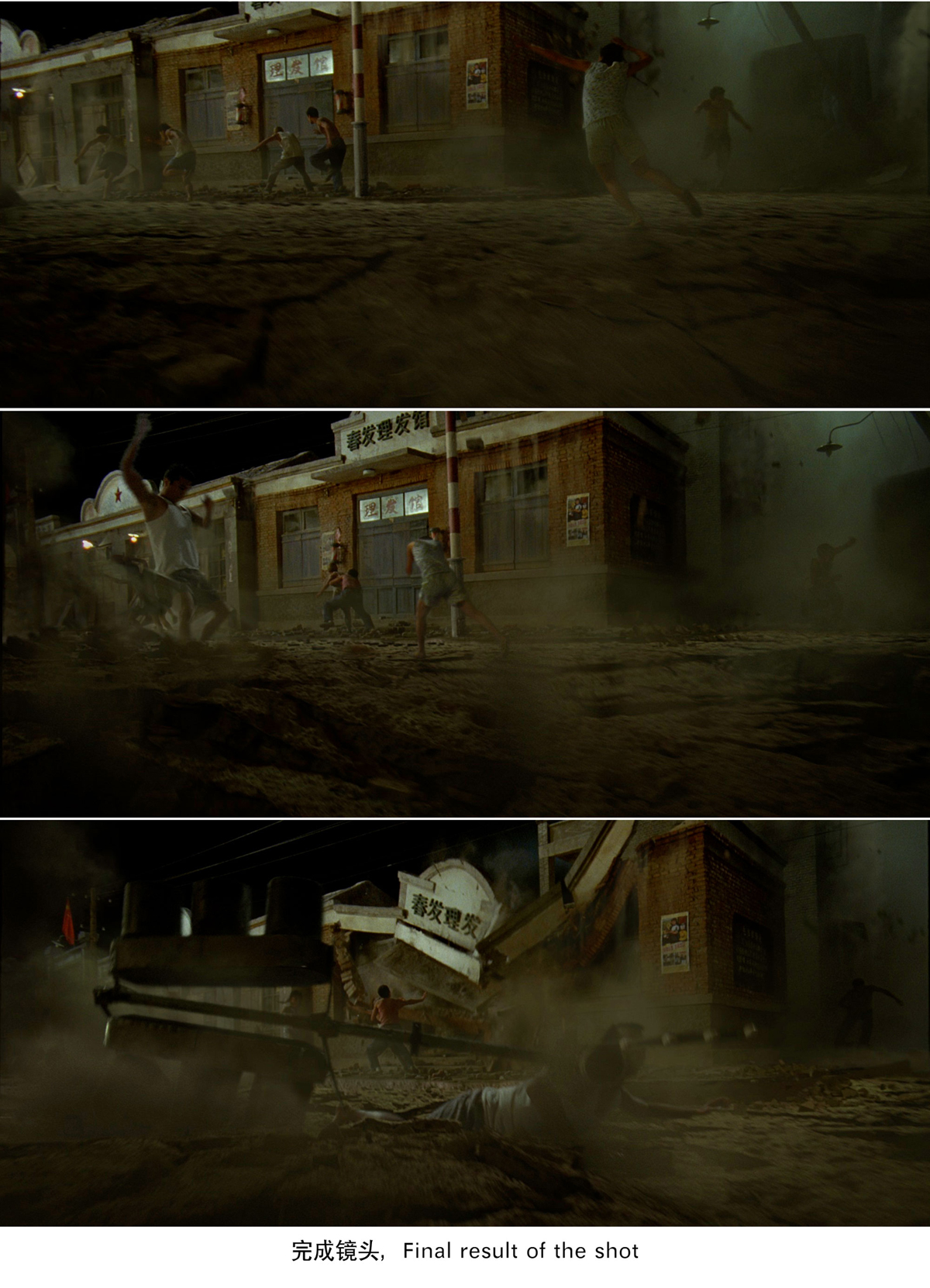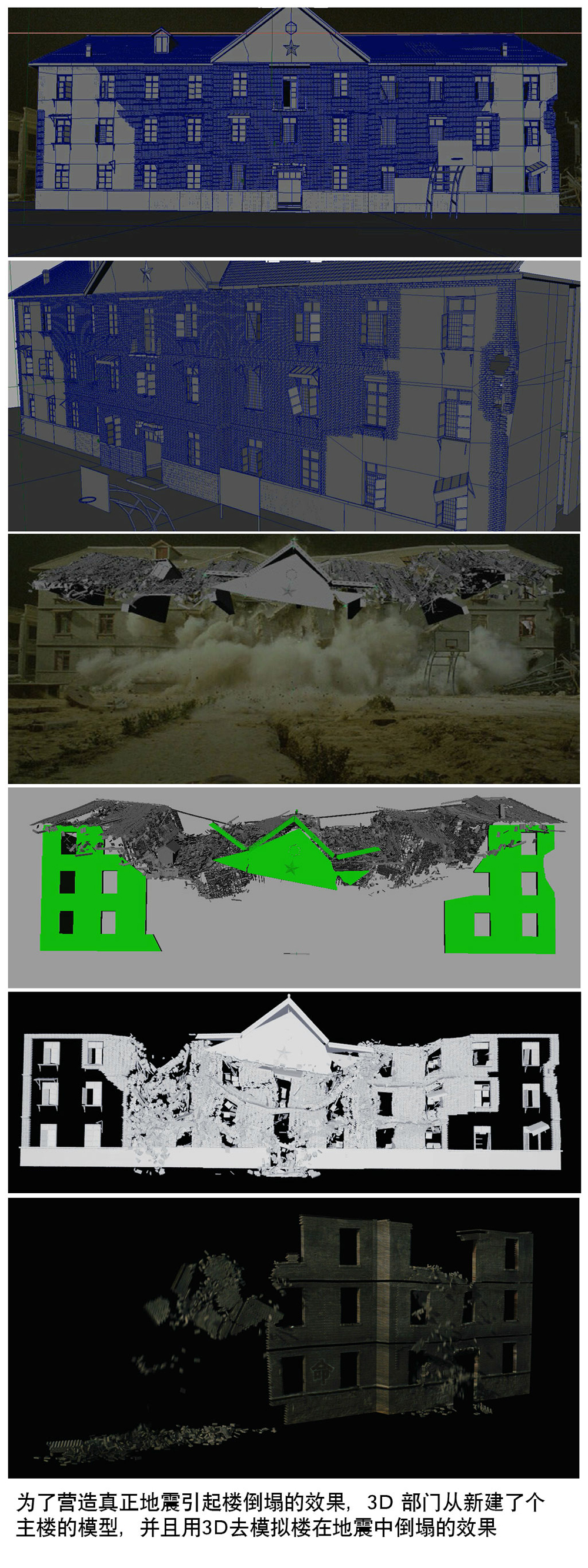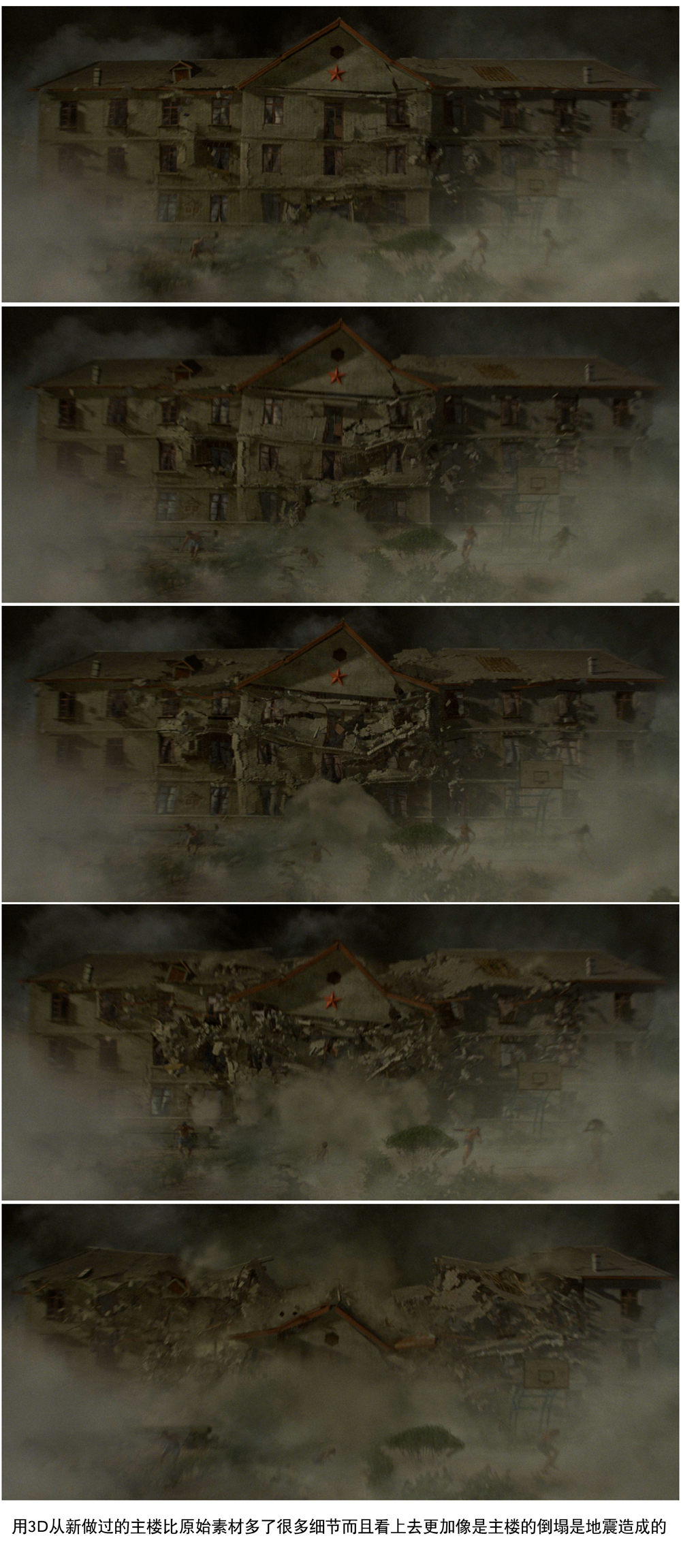Phil Jones has been evolving for over 10 years in VFX. He worked at Technicolor and Toyox. In 2007, he left for China to support the launch of Technicolor Beijing. He oversees the effects of such films as THE BANQUET, KUNG FU DUNK, THE FOUNTAIN, or 2012.
What is your background?
My interest in FX began back in the 70’s after seeing some of Norman McClaren’s early work on 16mm at my local library. Three of his shorts that are stuck in my head to this day are: PAS DE DEUX, A CHAIRY TALE and BOOGIE DOODLE. Like many a film geek with access to an 8mm camera, I had to try out these techniques on my own. There weren’t any instruction books (that I could find) on the subject of animation and effects. So what followed was a lot of trial and error, and a lot of time spent waiting for film to be developed and sent back!
Those early days of experimentation eventually led me to Film/Television School, which in turn brought me to my first job at a television station in the graphics department. When the department decided to splurge on a shiny new SGI Iris 4D/35 and a cut of Softimage V1.65, my destiny was realized.
What sequences have you made on this movie?
As the production VFX Supervisor I was responsible for all the sequences in the film.
Can you explain to us the creation of Technicolor Beijing?
Technicolor created the Joint Venture in Beijing in 2007 to bring its expertise to the rapidly growing local Chinese feature film industry. Technicolor asked if I would like to move to Beijing to get the office up and running and to stay and work there. The initial build out included both VFX and Digital Intermediate departments. The VFX department started with 15 artists in 2007 and grew to over 100 in 3 years.
What is the formation of your artists?
By the time AFTERSHOCK was in production and the Beijing office had grown close to 100 artists including a 40 person Roto/Prep department. At that time there were 2 other shows pushing through the Beijing office alongside AFTERSHOCK. To ensure the deadline was met, some shots were outsourced to Blackginger in Cape Town, Loki VFX in Toronto and MPC in London. (yes, reverse out-sourcing!)
Was there a lot of visual effects school in China?
Yes, there are quite a few VFX/Animation schools in China, the majority are privately run facilities. In addition to those schools, many companies have their own long term programs training artists internally.
How was the collaboration with the director Feng Xiaogang?
I had worked with Feng Xiaogang on a some of his earlier films, beginning with THE BANQUET in 2005. AFTERSHOCK was the 4th film we collaborated on, so I knew Director Feng’s expectations and he entrusted me with the conceptualization and creation of the VFX sequences for this picture.
Can you explain to us the creation of the dragonflies and how you animated so much of them?
The director based the dragonfly sequence on eye witness reports from survivors of the ’76 earthquake. The plates were shot at a working steel plant on the outskirts of Tangshan with a Flying-cam. Blackginger created the ever increasing swarm of dragonflies in Houdini. The majority of the “secondary” dragonfly movement was from a particle simulation. The hero’s were hand animated for the specific interaction with the actors and background.
How did you create the mattes-paintings showing Tangshan?
The mattes of ’76 Tangshan were based around live action plates from the practical set, both pre and post earthquake. Two large miniatures of the pre and post earthquake were built by a local company to assist in filling in the surrounding areas. These miniatures were based on the thousands of archival photos made available to us. The matte painters had to fix a number of scale issues with the miniatures to get everything to “fit”. Some 3D was brought in to add people and some post-earthquake destruction to the large scale mattes.
Can you speak about the fall of the big crane? How did you create it and animate it?
Blackginger handled the modeling and animation of the crane and its subsequent crash through the breezeway in Houdini. Production had purchased an operational 1970’s era crane that was moved to and re-assembled on the practical set. Hundreds of reference photos and a Lidar scan were used as modelling/texturing reference. Animation was a combination of hand animation and dynamic simulations.
Can you explain in detail how you create the impressive shot where a guy jump off a building that fall on him few seconds later?
This shot was an addition that came later in the shoot. Multiple motion control plates of stunt people and practical effects were shot and then combined with a fully digital building collapse handled by the MPC team in London.
How did you create and animate the digital doubles?
There were only a few shots that required digital doubles. Two of them were the crane crashing through the balcony. Blackginger hand animated the 3-4 people being crushed on the balcony in Houdini. They also added digital “survivors” walking around in the destroyed city for the wide shots of the destruction. For most of the other shots plates with stunt people were shot and composited (with a lot of roto) into either practical or digital destruction.
Did you create some previz to help the shooting and the special effects team?
Yes, previz was done for the earthquake sequence which helped everyone plan the requirements for each shot. Due to the relatively short shoot schedule for this sequence, we in VFX were called upon to enhance the destruction in every shot of the earthquake sequence.
Can you explain to us how you create the building falling and destruction?
There were a few different ways the building destruction was created. A few smaller areas on the buildings were prepped by the Special Effects team for practical destruction. Due to the large scale of the set, and the wider shots requested, we enhanced all of these shots quite dramatically.
A huge practical set was constructed to stand in for the 1976 Tangshan neighborhood. It’s brick and mortar construction was strong and complete enough for us to shoot inside a few of the buildings. When shooting was finished in one area of the set, it was torn down for the post-earthquake sequence. They found that it didn’t take too much effort to knock the buildings down, so the plan for the destruction was changed. In the final cut some shots used the practical “pull down” of the buildings with stunt people somewhat close to the practical destruction or mainly composited in later.
For the larger scale destruction it was decided early on to use miniatures and plans were underway with companies in New Zealand. After production found out how easy (and relatively safe) it was to pull the buildings down, the plan was changed to shoot the large scale destruction practically and to have a “little” digital enhancement. A local pyrotechnical demolition team was also brought in to “implode” a few of the larger buildings, including the hero building at the end of the sequence.
The unfortunate result was the explosives required had to be relatively strong to destroy the brick and mortar. So the initial explosion blew the fronts of the buildings out with so much dust you couldn’t see the building falling down in behind. This threw a big wrench in the post-schedule as we then had to re-create the majority of the building destruction completely in 3D.
How did you create the crowd in the evacuation shots?
These shots weren’t technically complicated. Since there were only a few of these crowd duplication shots in the film they were done as basic multi pass composite shots, with a TON of roto. The decision to do it this was was easy since we had 2000 extras from Tangshan playing the survivors and over 500 soldiers form the army!
Can you explain how you create the helicopters armada during the 2008 sequence?
We were lucky enough to have access to a single Chinese airforce helicopter for 2 days during the shoot. During those 2 days it flew many sorties to get the shots the Director required. Fortunately, we were allowed close enough to get measurements and texture reference so the single helicopter could be duplicated in 3D, to the armada you see in the final shots.
What was your feeling when you received your Best Visual Effects at Asian Film Awards 2010?
That was actually quite the surprise for me, I didn’t even know that I had been nominated! The VFX Production Manager on the picture emailed me a chinese news report showing a picture of someone, credited as me, accepting the award! To this day, I still don’t know who the guy was…
What was the biggest challenge on this project?
The biggest challenge was the relatively short schedule for the complexity of the final shots.
Was there a shot or a sequence that prevented you from sleeping?
No, not particularly. Generally I don’t have any problems sleeping!
What are your softwares and your pipeline in Technicolor Beijing?
In Beijing all 3D was from Maya and rendered in Mental Ray. Blackginger and Loki VFX both used Houdini, rendered in Mantra. MPC was based in Maya with a huge amount of custom code for the dynamic simulations. All houses comped the shots in Nuke.
How long have you worked on this film?
We were involved in pre-production for about 4 months, the shoot took place over the course of approximately 6 months. From initial plate turnover to final shot being dropped into the DI was 6 months.
How many shots have you made and what was the size of your team?
Total number of VFX shots in the final cut was about 240 divided up as follows:
Beijing: 179 shots
Blackginger: 56 shots
Loki VFX: 3 shots
MPC: 2 shots
What did you keep from this experience?
I will never forget meeting and hearing the stories of the survivors, and seeing the resulting destruction from both the 1976 quake in Tangshan and the 2008 earthquake in Sichuan. Many of the stories really hit home while we were shooting in a city that was devastated by the 2008 earthquake. We shot for about 2 weeks in a city that was once home to about 200,000, it was completely desolate and mostly untouched since the destruction of a year earlier. All of the previous residents were still living in temporary buildings in the farmlands outside their former home. The fences around the perimeter of the city kept it’s previous tenants and any other unauthorized people away from the still standing, but very unstable buildings that remained. The speed of the evacuation was evident by the many personal items that still remained on the balconies, in the windows and even family photos laying in the silent streets.
A big thanks for your time.
// WANT TO KNOW MORE?
– Technicolor Beijing: Official website of Technicolor Beijing.
// AFTERSHOCK (TANGSHAN DADIZHEN) – TRAILER
© Vincent Frei – The Art of VFX – 2011


